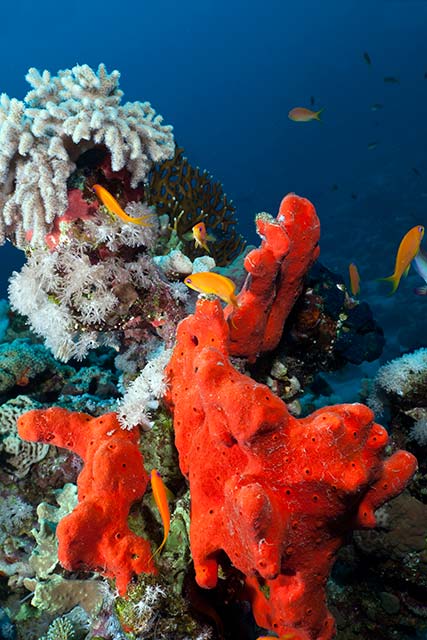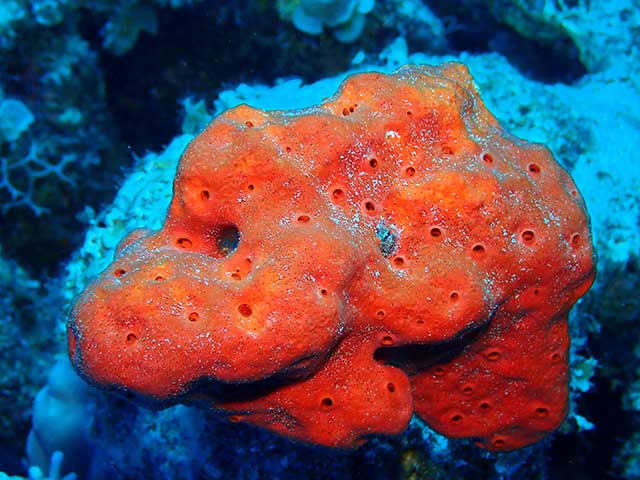

23 January 2024
Not just any old sponge that is a bit tedious, but the Red Boring Sponge.

It's called the boring sponge as it drills into coral and sea shells. The sponge breaks down dead and diseased (and sometimes live) coral. It extends thread-like etching cells into its host and chips off bits of calcium carbonate, expelling them through its pores. Over time the sponges create little tunnels beneath them.
In "normal" conditions they play an important part in the reef, recycling calcium carbonate. But if the coral is struggling due to high water temperatures, acidification or pollution, the boring sponges can erode the reef faster than the corals can replace it.

Sponges are very simple animals. They have no digestive, nervous or circulatory systems. Symbiotic zooxanthellae (dinoflagellates) living in the sponge tissue photosynthesise and provide the sponge with nutrition.
Not only is the red boring sponge not so boring, it isn't always red either. You often see them is shades through orange to yellow.
You find this boring sponge around the World: North Sea, Red Sea, Mediterranean Sea, Black Sea, Caribbean Sea, Atlantic and Pacific, in depths below 10 m.
Phylum: Porifera > Class: Demospongiae > Order: Hadromerida > Family: Clionaidae > Genus: Pione > Species: Pione vastifica